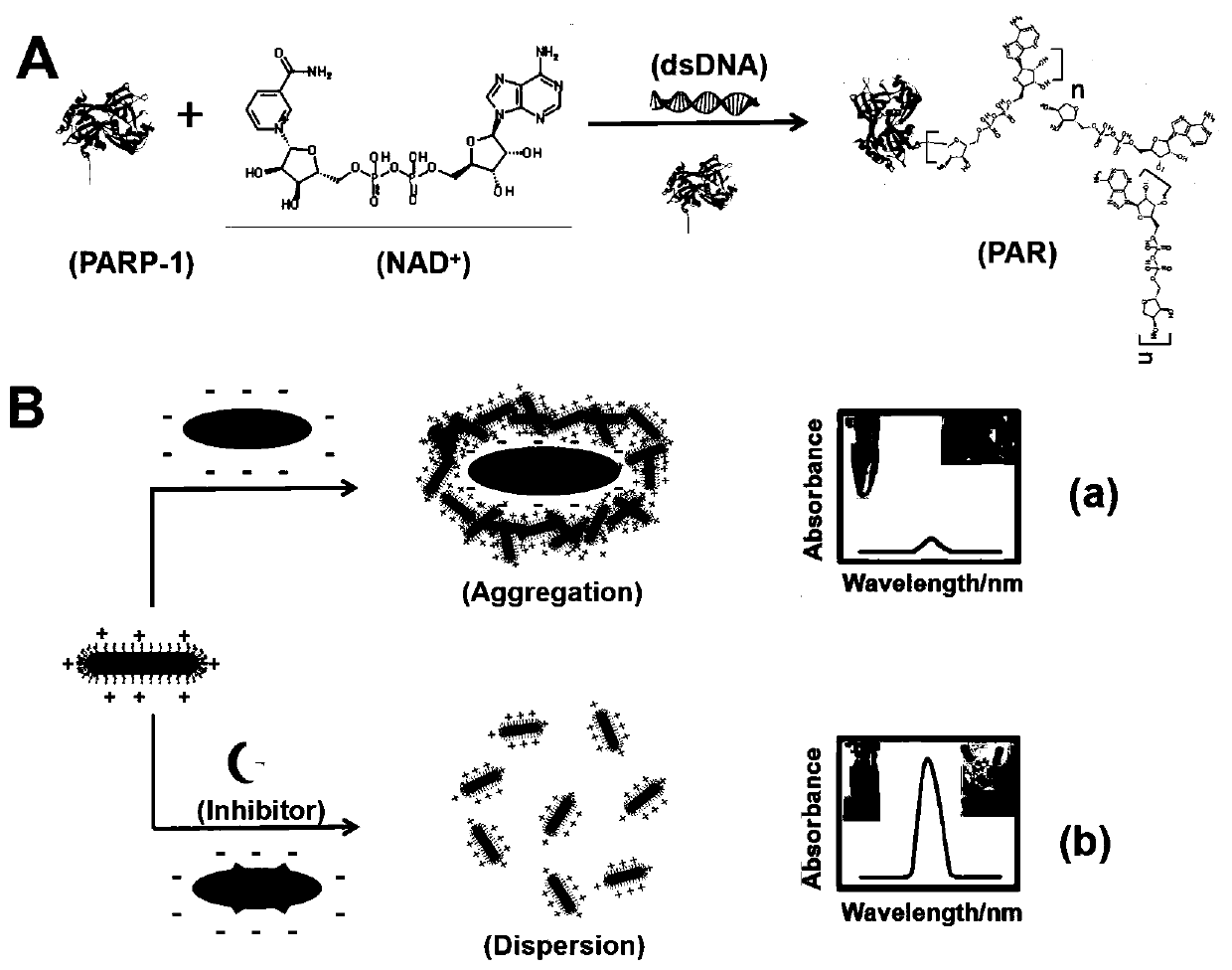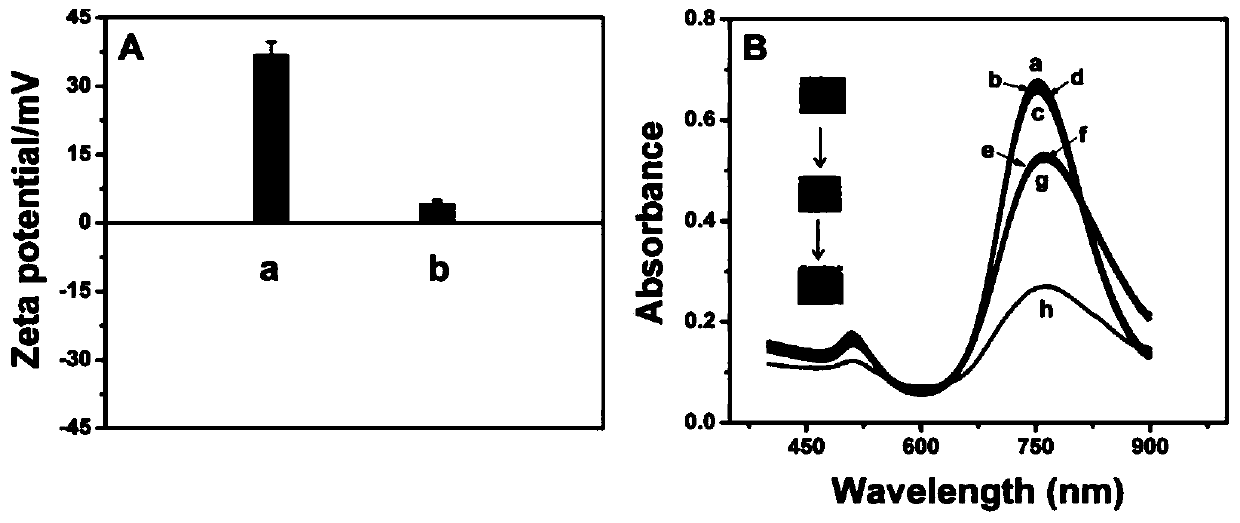Method for detecting poly ADP-ribose polymerase-1 with gold nanorod probe
A technology of polyadenosine diphosphate-ribose and gold nanorods, which is applied in the field of biosensing, can solve the problems of complicated operation procedures, narrow detection range and high cost, and achieve the effect of low operating cost, low raw material cost and simple principle
- Summary
- Abstract
- Description
- Claims
- Application Information
AI Technical Summary
Problems solved by technology
Method used
Image
Examples
Embodiment 1
[0027] The analytical method for detecting poly ADP-ribose polymerase-1 by gold nanorod probe colorimetric method based on electrostatic interaction, the detection steps are:
[0028] Synthesis steps of gold nanorod probes: gold nanorods were synthesized by a one-pot method. Take a mouth bottle, add 38mL of CTAB solution with a concentration of 0.2mol / L to 30mL of deionized water, then quickly add 3mL of chloroauric acid dropwise, and then slowly add 346μL of 0.02mol / L silver nitrate solution and 2mL containing 0.044g After the hydroquinone solution was reacted for 5 minutes, 2.6 mL of freshly prepared sodium borohydride ice water solution with a concentration of 0.5 mmol / L was added, shaken evenly, and incubated at 30°C for more than 12 hours, and the total volume was 76 mL. Finally, the probe solution was centrifuged at 13000 rpm at 20° C. for 20 to 30 minutes, redissolved in deionized water after centrifugation twice, and stored at room temperature. This solution was used ...
Embodiment 2
[0033] The analytical method for detecting poly ADP-ribose polymerase-1 by gold nanorod probe colorimetric method based on electrostatic interaction, the detection steps are:
[0034] Synthesis steps of gold nanorod probes: gold nanorods were synthesized by a one-pot method. Take a mouth bottle, add 38mL of CTAB solution with a concentration of 0.2mol / L to 30mL of deionized water, then quickly add 3mL of chloroauric acid dropwise, and then slowly add 346μL of 0.02mol / L silver nitrate solution and 2mL containing 0.044g After the hydroquinone solution was reacted for 5 minutes, 2.6 mL of freshly prepared sodium borohydride ice water solution with a concentration of 0.5 mmol / L was added, shaken evenly, and incubated at 30°C for more than 12 hours, and the total volume was 76 mL. Finally, the probe solution was centrifuged at 13000 rpm at 20° C. for 20 to 30 minutes, redissolved in deionized water after centrifugation twice, and stored at room temperature. This solution was used ...
Embodiment 3
[0039] The analytical method for detecting poly ADP-ribose polymerase-1 by gold nanorod probe colorimetric method based on electrostatic interaction, the detection steps are:
[0040] Synthesis steps of gold nanorod probes: gold nanorods were synthesized by a one-pot method. Take a mouth bottle, add 38mL of CTAB solution with a concentration of 0.2mol / L to 30mL of deionized water, then quickly add 3mL of chloroauric acid dropwise, and then slowly add 346μL of 0.02mol / L silver nitrate solution and 2mL containing 0.044g After the hydroquinone solution was reacted for 5 minutes, 2.6 mL of freshly prepared sodium borohydride ice water solution with a concentration of 0.5 mmol / L was added, shaken evenly, and incubated at 30°C for more than 12 hours, and the total volume was 76 mL. Finally, the probe solution was centrifuged at 13000 rpm at 20° C. for 20 to 30 minutes, redissolved in deionized water after centrifugation twice, and stored at room temperature. This solution was used ...
PUM
 Login to View More
Login to View More Abstract
Description
Claims
Application Information
 Login to View More
Login to View More - R&D
- Intellectual Property
- Life Sciences
- Materials
- Tech Scout
- Unparalleled Data Quality
- Higher Quality Content
- 60% Fewer Hallucinations
Browse by: Latest US Patents, China's latest patents, Technical Efficacy Thesaurus, Application Domain, Technology Topic, Popular Technical Reports.
© 2025 PatSnap. All rights reserved.Legal|Privacy policy|Modern Slavery Act Transparency Statement|Sitemap|About US| Contact US: help@patsnap.com



